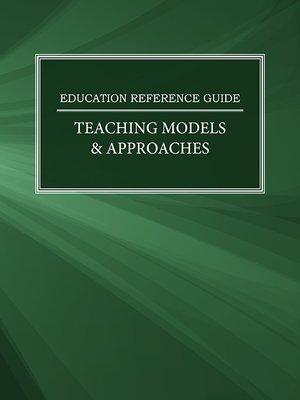
Sign up to save your library
With an OverDrive account, you can save your favorite libraries for at-a-glance information about availability. Find out more about OverDrive accounts.
Find this title in Libby, the library reading app by OverDrive.



Search for a digital library with this title
Title found at these libraries:
| Library Name | Distance |
|---|---|
| Loading... |
The collection opens with a review of Benjamin Bloom’s Taxonomy of Educational Objectives, which are divided
into three types of learning domains – cognitive, affective, and psychomotor. Though each category is different, they
all share six main learning objectives: knowledge, comprehension, application, analysis, synthesis, and evaluation. In
the following essay, Holly Conti introduces Howard Gardner’s theory of multiple intelligence and its aim in allowing
students to utilize their personal learning preferences in order to maximize their strengths and improve upon their
weaknesses. Maureen McMahon transitions into Johann Herbart’s theory of apperception and the scientific approach
to pedagogy that incorporates the ideas of individualism and humanism. There are 2 popular theories often in conflict
with each other: Seymour Papert’s constructionism and Piaget’s constructivism. As Jennifer Kretchmar illustrates,
Piaget’s learning theory differentiates from constuctionism because it emphasizes social interaction and the concrete
over the individual learning experience and abstract concepts. While Tricia Smith analyzes the impact of existential
thought on educational applications, Kretchmar outlines the development of postmodernism, specifically “its impact
on education, in terms of student-teacher relationships, research, and curriculum development.”







